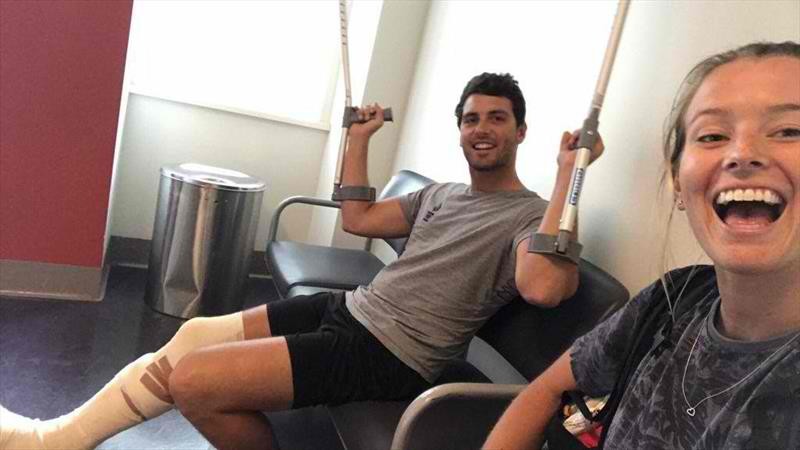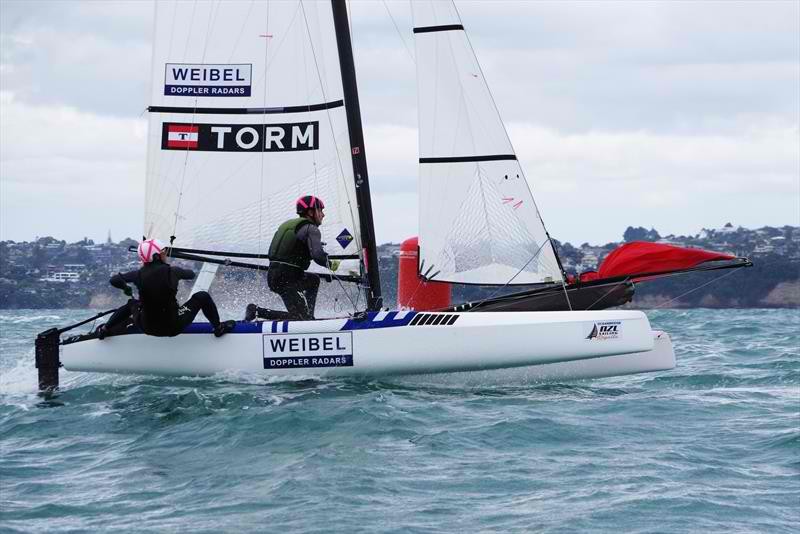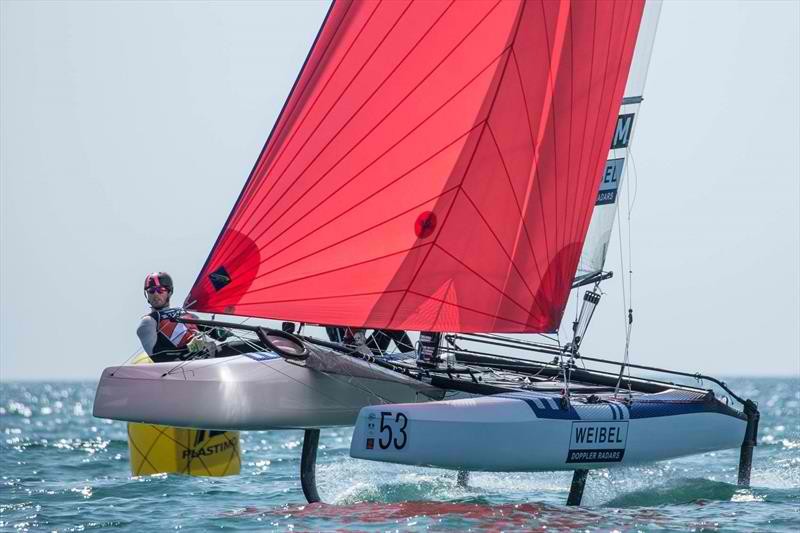
Following an incident during the Oceanbridge Sailing NZ Regatta when Nacra 17 crew member CP Lubeck (DEN) was struck by a rudder foil after falling overboard, the Nacra 17 Executive have issued a further statement.
CP Lubeck was injured when he fell overboard after his trapeze ring broke and he was struck by the rudder. Thankfully CP is in recovery and was released from the hospital after two nights there. We all look forward to seeing him out sailing soon.
The Nacra 17 Class Executive met to discuss the incident. They also discussed other reports of rudder strike incidents occurring to Class members in training this winter.
World Sailing have set up a sailing-wide safety database where anyone with relevant knowledge of an incident can log safety concerns. We encourage all sailors who have been injured or involved in near misses to log these incidents so that the sport can best remedy systemic issues that may come up from time to time.
Yachting New Zealand are conducting an investigation to the incident and we look forward to receiving their findings and recommendations.
From a Class perspective the immediate concern is that rudder strikes are occurring too frequently to be called isolated incidents. Further, the consequences of a rudder strike are greater than typically found in other dinghy or standard catamaran sailing due to the fixed/locked nature of the rudders and the increased speed of the boat on foils.
Many of the falls overboard (with subsequent rudder strikes) have been due to failure of the trapezing systems. The class recommends and encourages all sailors to focus on safety, particularly by inspecting the integrity of your trapezing system. Here is a list of recommendations from the class:
- Frequent Inspection:
- Rope wear
- Fitting wear
- Corrosion or discoloration of metal
- Deformation of metal
- Partial wire failure
- Installation of Redundancy:
- Winding rope around trapeze hoops so if the metal fails, the rope catches the hook
- Use spreader bar harness so that if one side fails the sailor will remain attached via the other side
- Tie port and starboard trapeze line origins to each other so if one fitting fails the other catches the falling one
- Selecting Suitable Equipment (consider durability and designed use):
- This is a link to what looks like the old part that was more susceptible to failure at the weld/join of the tab to the ring.
- Ensure your trap gear is substantial. The part that failed in this incident was a Ronstan trapeze ring. Ronstan has responded to our request for comment, and has confirmed that this part was redesigned and re-released in April 2017. For those with older versions, extra vigilance must be taken.
- This is a link to what Ronstan is selling now. Note the photo shows a pressed flat section and is made from a heavier guage material.
- Sailors should inspect the parts they are using and be aware there could be different parts on the market beyond the brand and the general look of the part.
- We have heard reports of other brands of trapeze hoops failing as well. Another frequent area of failure as at the point where the hook hangs on the hoop. This is especially prevalent if there is wear on the metal surface or distortion of the hoop to create a point.
- There is a developing market for custom hoops to counter the failures of standard parts. Inspect what gear you are using and be sure you are confident it is sufficient for the task and in good working order.
- Ensure ropes are of a sufficient thickness and strength for the duty being applied and replace them if signs of wear are visible. Ensure any knots or splices used in the system will not slip, and if used as stoppers are thick enough to hold.
- Sometimes the trapeze system is used as a dead end to things like jib sheets or the Cunningham by sailors to make it easier to pick up these lines. If using a part of the trap system for an additional purpose, ensure that the load on the system is applied to the parts as intended, so twisting or excessive loads are not applied.
Additional diligence to the integrity of the trapeze system should reduce the incidences of failure, however, falling overboard can occur none the less. The Nacra 17 Executive also recommend that sailors consider the following to reduce the consequences of a fall:
- Carry a whistle. This has been mentioned a number of times. It is important to alert other sailors to your presence in the water, both for avoidance by other boats and to enable you to be located quickly.

- Ensure helmet brightness is substantial. The Class rules added the requirement to include a minimum of 300mm squared bright section to ensure visibility is increased for sailors in the water. Please note that 300mm square is the minimum, not maximum. Please ensure these areas are as bright as you can make them.
- Personal protective equipment should be the last line of defence against injury. In the short term, however, sailors should investigate the options available for cut and impact protection. There are sailing brands that produce such equipment today, and other options include borrowing from other sports. Ice hockey, for example, has Kevlar reinforced socks that prevent skate cuts.
- Ensure you have a safety plan worked out ahead of time in case an injury does occur. Know where the closest emergency services are. Know where you would call an ambulance to meet you if necessary. If you are sailing alone, ensure you have notified people on shore of your plans and carry communication devices to alert coast guard or emergency services if there is an incident requiring aid. Where possible please avoid sailing alone.
The Nacra 17 Executive has also fielded several suggestions to reduce the frequency of board and rudder strikes in the longer term through engineering changes. We have initiated an initial engineering review of the options communicated and we expect to hear a preliminary report by the end of February. Other engineering study requests by the Class to Nacra Sailing have been suspended for this period so that investigating these safety related options remains the priority. 
